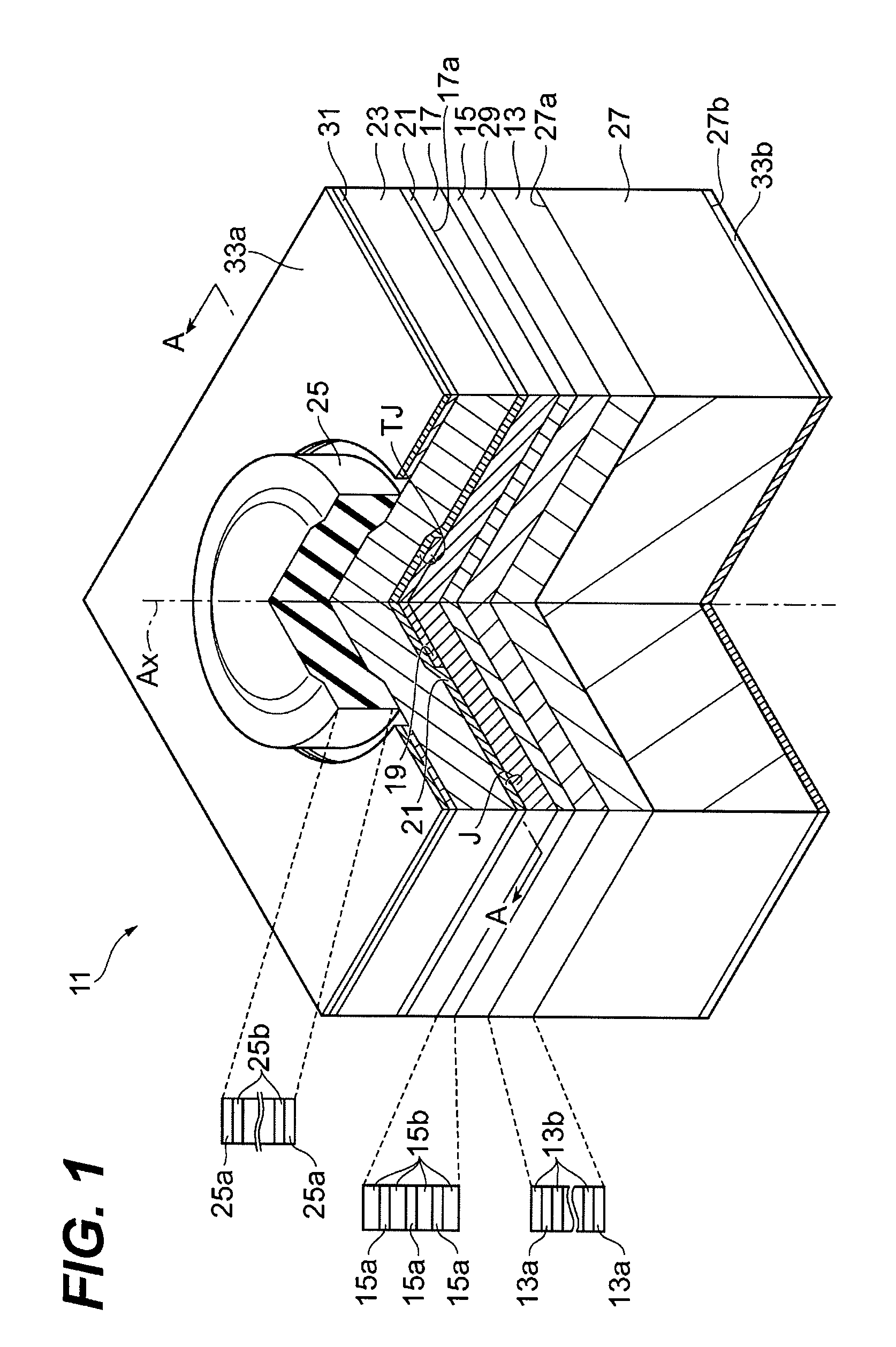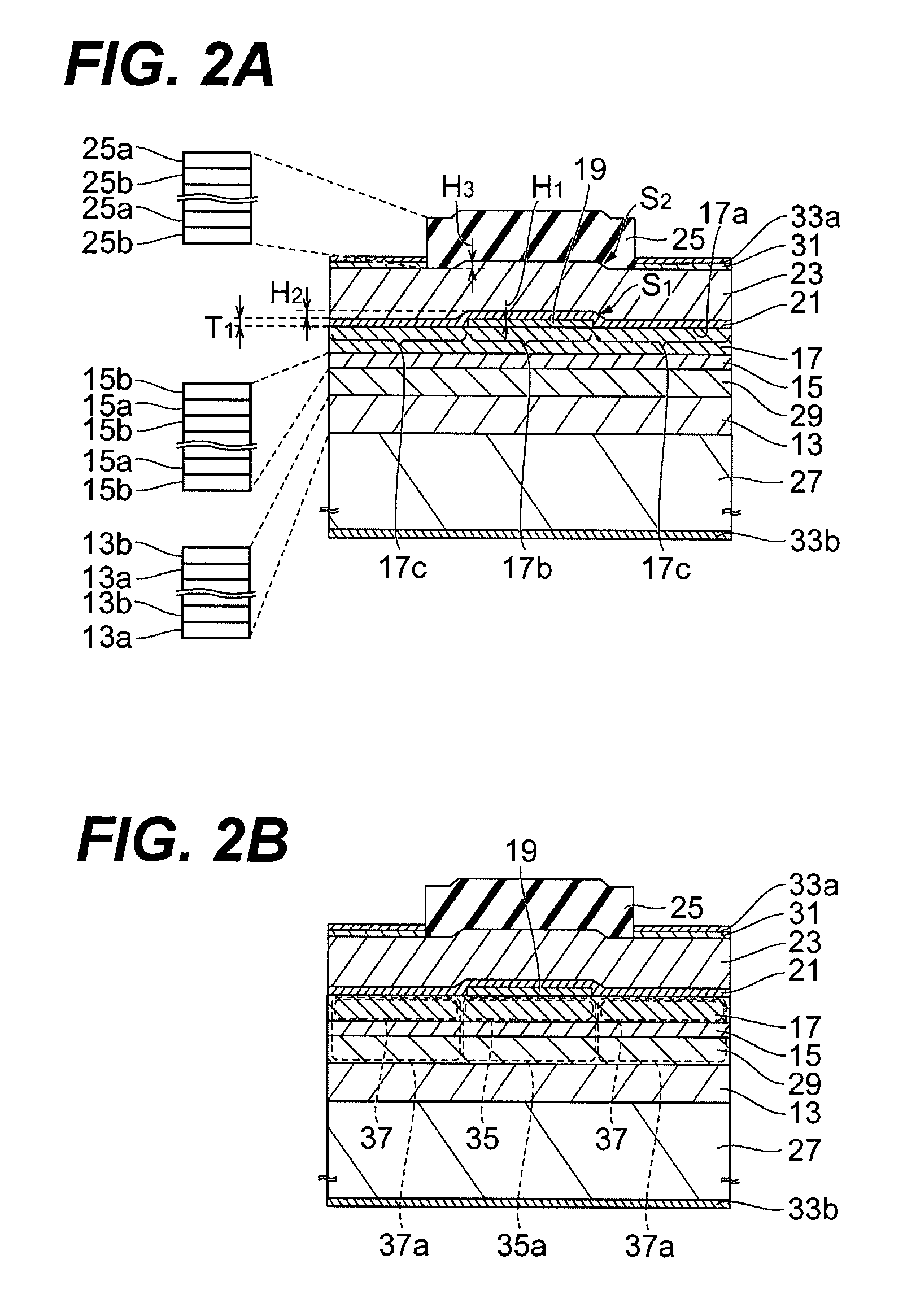Vcsel with reduced light scattering within optical cavity
- Summary
- Abstract
- Description
- Claims
- Application Information
AI Technical Summary
Benefits of technology
Problems solved by technology
Method used
Image
Examples
Embodiment Construction
[0020]The substance of the present invention will be easily understood by the description presented below as referring to accompanying drawings. Next, preferred embodiments of the vertical cavity surface emitting laser diode according to the present invention will be described as referring to drawings. In the description of the drawings, the same numerals or the same symbols will refer to the same elements without over lapping explanations.
[0021]FIG. 1 is a perspective drawing of a vertical cavity surface emitting layer diode (VCSEL) according to an embodiment of the present invention. The VCSEL 11 provides a first Bragg reflector (hereafter denoted as the first DBR) 13, an active layer 15, a p-type space layer 17, a heavily doped p-type mesa 19, a heavily doped n-type layer 21, a first n-type space layer 23, and a second DBR layer (hereafter denoted as the second DBR) 25. FIG. 2A is a cross section of the VCSEL shown in FIG. 1, which is taken along the line A-A. The arrangement of ...
PUM
 Login to View More
Login to View More Abstract
Description
Claims
Application Information
 Login to View More
Login to View More - R&D
- Intellectual Property
- Life Sciences
- Materials
- Tech Scout
- Unparalleled Data Quality
- Higher Quality Content
- 60% Fewer Hallucinations
Browse by: Latest US Patents, China's latest patents, Technical Efficacy Thesaurus, Application Domain, Technology Topic, Popular Technical Reports.
© 2025 PatSnap. All rights reserved.Legal|Privacy policy|Modern Slavery Act Transparency Statement|Sitemap|About US| Contact US: help@patsnap.com



